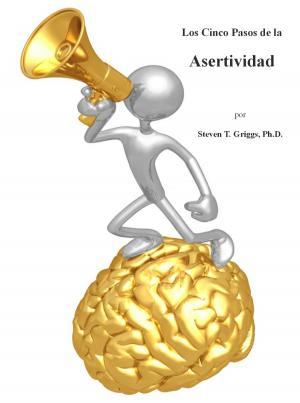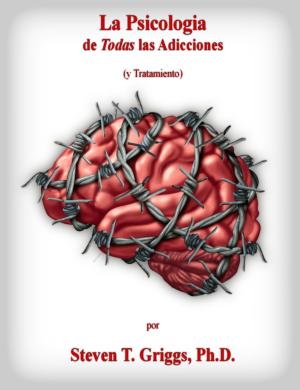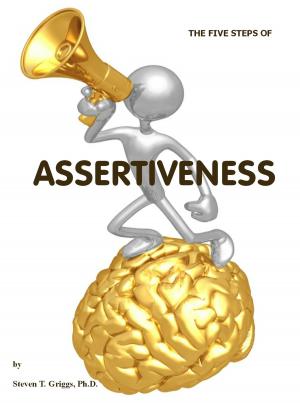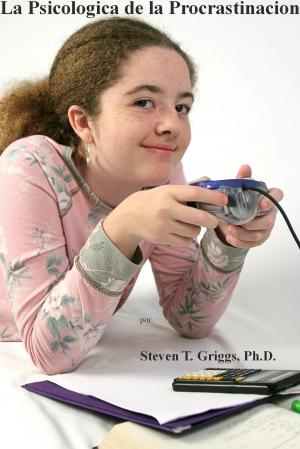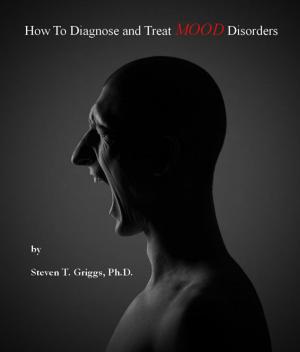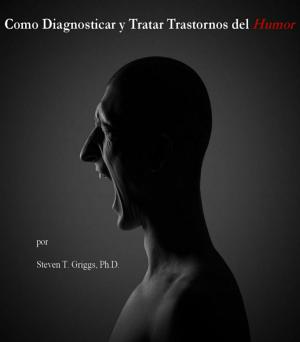How To Assess and Treat ADHD (Children and Adults)
Nonfiction, Health & Well Being, Psychology, Counselling, Mental Health| Author: | Steven T. Griggs, Ph.D. | ISBN: | 9781310979835 |
| Publisher: | Steven T. Griggs, Ph.D. | Publication: | August 29, 2014 |
| Imprint: | Smashwords Edition | Language: | English |
| Author: | Steven T. Griggs, Ph.D. |
| ISBN: | 9781310979835 |
| Publisher: | Steven T. Griggs, Ph.D. |
| Publication: | August 29, 2014 |
| Imprint: | Smashwords Edition |
| Language: | English |
-Intro and ADHD test.
-Definitions and symptoms--"Classic" ADHD: Inattention/Hyperactive-Impulsive. Hyperfocused subtype, Central sensitization subtype, Temporal, Limbic and The Ring subtypes/phenomena. Other cognitive syndromes.
-Hypoarousal states, neuron states (excitatory and inhibitory), self-stimulation seeking.
-ADHD recognized by four official government agencies. Demographics: five percent of the population. Frequency of boys vs. girls, kids vs. adults. Genetic preponderance and geographic propensities. ADHD and gradeschool performance; retention rates.
-ADHD and family composition. ADHD and acting out, substance use, medical bills, behavior problems. Boys vs. girls--different behaviors?
-ADHD and differential diagnoses (ODD, OCD, moods and specifically, bipolar disorder).
-ADHD--first appearance, which symptoms. ADHD and the critical first three years of school (KG, first and second grade). Do kids outgrow this? ADHD vs. "Normal" behaviors.
-Causes of ADHD--Seven categories.:
-Five steps to diagnosing ADHD
- Clinical Interview.
Choosing the right professional. Preparing for the interview. Physical Exam--What questions to prepare for. Eliminating other possible causes (other illnesses or conditions).
-2) Behavior Rating Scale.
Child version. Adult version. How to score and interpret the scores.
-3) Differential Diagnostic Testing--Getting an Intelligence Test. A primer on differentiating learning disabilities.
-4) Differential Diagnostic Testing--Getting an Achievement Test. Learning Disability diagnosed vs. simple ADHD.
-5) Differential Diagnostic Testing--Neurological Test, Visual evaluation--acuity vs. tracking.
ADHD or Bipolar Disorder? ADHD and intelligence--the myths.
-Tying all the results together. "Workarounds" and the impact on test results.
-Hyperfocused Type.
-The rich and famous. Self-Esteem.
-Treatments (four major ones, numerous minor ones):
-Managing sleep, allergies and diet. Problem substances in foods--23 categories. Diet clean ups. The two-week plan. Diet suggestions.
-1) Psychotherapy/Behavior therapy
Externalizing strategies: 4:1 rule, three contingencies of reinforcement, cueing, modeling, shaping, reinforcement schedules, star charts, punishment vs. rewards, task reducing, self-talk, self-monitoring, mindfulness, journaling, cognitive re-framing.
-2) Family therapy: symptom containment, scheduling behaviors, family rules, assertiveness, empathy, symptom mapping, stress management. Parenting Considerations: Breast feeding, sleep, morning routine management, team vs. one-on-one approaches, manipulation, strategic breaks.
General considerations for psychotherapy and family therapy: slow down, uni-focusing, immediacy and here-and-now processing, managing expectations, identifying recurring problems, external ticklers, managing transitions, using props, creating routines, organizing, homework tips, homework tracking, clarity/consistency, garnering attention, praise/reward criteria, love, enjoyment, task immersion, safe environments, ambient sounds, exercise, inside vs. outside activities, non-labeling, maturity assessment, "screen" time policy, personal assistants, best kinds of teachers and schools, special services/grants/programs, cognitive mapping (two kinds), cognitive monitoring, creativity, structured thinking (12 kinds), structured movement.
-Other proposed ADHD remedies--Things to think about and/or try before going further: Meditation/mindfulness, Brain Highways, Neurofeedback.
-3) Herbs (ten)
Homeopathic approaches (sample of two products but too many ingredients to count). Vitamins/supplements (forty plus...).
-4) Medication
Stimulants (six chemical classes with eleven variations/brand names). Non-stimulants (four chemical classes with six variations/brand names)
-Appendix C: Further reading and related sources (19) and websites to search (13).
-Appendix D: Quotes (funny and profound).
-That's my quick outline. This ebook is stuffed...
-Intro and ADHD test.
-Definitions and symptoms--"Classic" ADHD: Inattention/Hyperactive-Impulsive. Hyperfocused subtype, Central sensitization subtype, Temporal, Limbic and The Ring subtypes/phenomena. Other cognitive syndromes.
-Hypoarousal states, neuron states (excitatory and inhibitory), self-stimulation seeking.
-ADHD recognized by four official government agencies. Demographics: five percent of the population. Frequency of boys vs. girls, kids vs. adults. Genetic preponderance and geographic propensities. ADHD and gradeschool performance; retention rates.
-ADHD and family composition. ADHD and acting out, substance use, medical bills, behavior problems. Boys vs. girls--different behaviors?
-ADHD and differential diagnoses (ODD, OCD, moods and specifically, bipolar disorder).
-ADHD--first appearance, which symptoms. ADHD and the critical first three years of school (KG, first and second grade). Do kids outgrow this? ADHD vs. "Normal" behaviors.
-Causes of ADHD--Seven categories.:
-Five steps to diagnosing ADHD
- Clinical Interview.
Choosing the right professional. Preparing for the interview. Physical Exam--What questions to prepare for. Eliminating other possible causes (other illnesses or conditions).
-2) Behavior Rating Scale.
Child version. Adult version. How to score and interpret the scores.
-3) Differential Diagnostic Testing--Getting an Intelligence Test. A primer on differentiating learning disabilities.
-4) Differential Diagnostic Testing--Getting an Achievement Test. Learning Disability diagnosed vs. simple ADHD.
-5) Differential Diagnostic Testing--Neurological Test, Visual evaluation--acuity vs. tracking.
ADHD or Bipolar Disorder? ADHD and intelligence--the myths.
-Tying all the results together. "Workarounds" and the impact on test results.
-Hyperfocused Type.
-The rich and famous. Self-Esteem.
-Treatments (four major ones, numerous minor ones):
-Managing sleep, allergies and diet. Problem substances in foods--23 categories. Diet clean ups. The two-week plan. Diet suggestions.
-1) Psychotherapy/Behavior therapy
Externalizing strategies: 4:1 rule, three contingencies of reinforcement, cueing, modeling, shaping, reinforcement schedules, star charts, punishment vs. rewards, task reducing, self-talk, self-monitoring, mindfulness, journaling, cognitive re-framing.
-2) Family therapy: symptom containment, scheduling behaviors, family rules, assertiveness, empathy, symptom mapping, stress management. Parenting Considerations: Breast feeding, sleep, morning routine management, team vs. one-on-one approaches, manipulation, strategic breaks.
General considerations for psychotherapy and family therapy: slow down, uni-focusing, immediacy and here-and-now processing, managing expectations, identifying recurring problems, external ticklers, managing transitions, using props, creating routines, organizing, homework tips, homework tracking, clarity/consistency, garnering attention, praise/reward criteria, love, enjoyment, task immersion, safe environments, ambient sounds, exercise, inside vs. outside activities, non-labeling, maturity assessment, "screen" time policy, personal assistants, best kinds of teachers and schools, special services/grants/programs, cognitive mapping (two kinds), cognitive monitoring, creativity, structured thinking (12 kinds), structured movement.
-Other proposed ADHD remedies--Things to think about and/or try before going further: Meditation/mindfulness, Brain Highways, Neurofeedback.
-3) Herbs (ten)
Homeopathic approaches (sample of two products but too many ingredients to count). Vitamins/supplements (forty plus...).
-4) Medication
Stimulants (six chemical classes with eleven variations/brand names). Non-stimulants (four chemical classes with six variations/brand names)
-Appendix C: Further reading and related sources (19) and websites to search (13).
-Appendix D: Quotes (funny and profound).
-That's my quick outline. This ebook is stuffed...

